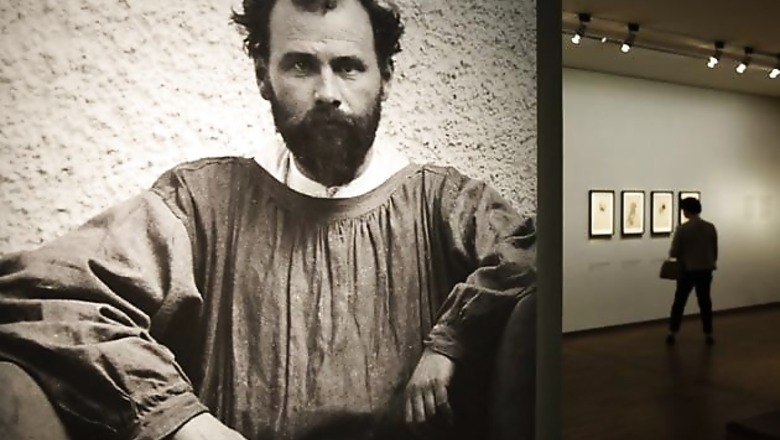
views
New Delhi: To celebrate the 150th birth anniversary Gustav Klimt, the Belvedere has decided to devote a comprehensive temporary exhibition to Gustav Klimt, the most renowned Austrian painter and a trailblazer of Modernism.
Klimt and his masterpieces are conveyed to the spectator through an entirely unprecedented interdisciplinary approach.
As soon as visitors approach the respective paintings, the app installed on their iPads will easily establish correlations with the topography of Klimt's travel destinations and allow them to spatially experience his personal living quarters and the buildings where or for which he created works of art.
To each visitor and everyone interested in Klimt, the Google-Maps-based geomedia "Gustav Klimt World Map" is made available for download via the iTunes Store as a crucial aid. This ensures an entirely new and continuous experience of the exhibition that goes far beyond the visit to the museum and exhibition as such.
"iPad will accompany visitors on a self-directed multimedia journey through the artist's oeuvre and life. This multifaceted experience of the exhibition is based on an expansion of the horizon of perception: visitors are enabled to immerse themselves into the works as such, rely on texts as a guideline, obtain background information from audio files, and position themselves on the Klimt map," Alfred Weidinger, deputy director of the Belvedere and curator of the exhibition, explains.
Everyone interested in the Klimt map can download it for free from the Web. In this way, the app functions as a "casual guide" to all the places that were of eminent importance in Klimt's life even beyond the exhibition.
Who was Gustav Klimt?
Born in Baumgarten, near Vienna, in 1862, Gustav Klimt was the second of seven children. Klimt spent much of his childhood in poverty. To receive training as an architectural painter, Klimt was enrolled in the Vienna School of Arts and Crafts (Kunstgewerbeschule) in 1876, where he studied until 1883.
In 1888, Klimt received the Golden order of Merit from Emperor Franz Josef I of Austria for his contributions to murals. Both Klimt's father and brother Ernst died in 1892. Following this, he had to take up financial responsibility for his father's and brother's families, which adversely affected his artistic vision.
In the early 1890s, Klimt met Emilie Floge, who was to be with him until the end of his life. However, it is debated that whether his relationship with Floge was sexual or not, but during that period Gustav Klimt fathered at least 14 children.
In 1894, Klimt was asked to design three paintings to adorn the ceiling of the Great Hall in the University of Vienna. His three paintings - Philosophy, Medicine and Jurisprudence were picked apart for their radical themes and material, which was called "pornographic".
In 1902, Klimt designed the Beethoven Frieze painting for the 14th Vienna Secessionist exhibition. Meant for the exhibition only, the frieze painting was painted directly on the walls with light materials. After the exhibition, the painting was preserved, and it did not go on display until 1986.
Gustav Klimt's 'Golden Phase' was marked by positive critical reaction and success. He made the use of gold leaf in most of his paintings. The works most popularly associated with this period are the Portrait of Adele Bloch-Bauer I (1907) and The Kiss (1907-1908).
During the period from 1907 and 1909, Klimt painted five canvases of society women wrapped in fur. In 1911, one of his paintings - Death and Life -bagged first prize in the world exhibitions in Rome.
Gustav Klimt is also known for his erotic paintings of nude women. Quite like fellow Austrian Sigmund Freud, Gustav Klimt brought sexuality into the public sphere. He was once forced to take down a particularly controversial painting that showed a naked pregnant woman.
Gustav Klimt and his work have been the subjects of many collector coins and medals.
He died in Vienna on February 6, 1918 after contracting Spanish flu during the 1918 flu pandemic.
In 2006, Klimt, an Austrian art-house biographical film about the life of Gustav Klimt (1862–1918) was made. It was written and directed by Raoul Ruiz.
















Comments
0 comment